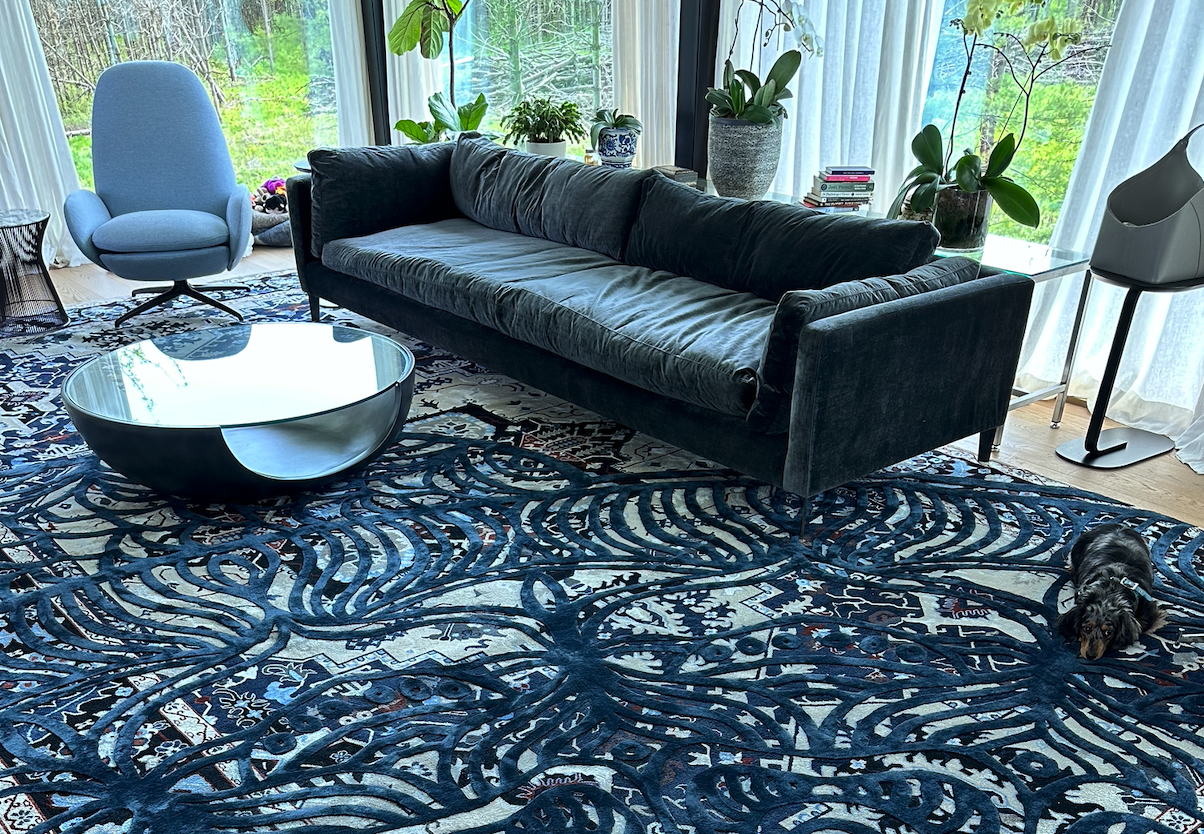Creating Healthier Homes: Natural vs. Synthetic Rugs
Every element within our homes plays a crucial role in our pursuit of healthier and more sustainable living. Let’s delve into an overlooked topic—the impact of rugs on indoor air quality and the environment.
The traditional artistry of rug making has been diluted in response to market demands for efficiency and affordability within the interior design industry, resulting in a heightened preference for synthetic rugs.
Here we explore why hand-knotted rugs stand out as a superior choice for your clients compared to their synthetic counterparts.
Natural vs. Synthetic Rugs: A Health Perspective
When it comes to the well-being of our families, especially children, pets, and the elderly, the choice of rugs becomes significant. Hand-knotted rugs, crafted from materials like wool and silk, emerge as health champions.
In contrast to synthetic rugs manufactured from plastics and polymers, natural rugs don't release harmful off-gassing. These off-gases, common in synthetic rugs, can be particularly concerning in enclosed spaces like nurseries, impacting air quality and potentially leading to health issues.
Air Quality Champions: The Magic of Hand-Knotted Rugs
Hand-made bespoke rugs are more than just visually appealing; they actively improve indoor air quality. Natural fibers in these rugs act as effective filters, absorbing and trapping pollutants like pollen, dust, dirt, and allergens until the next vacuuming. This contrasts sharply with synthetic rugs, notorious for contributing to indoor pollution. Moreover, hand-knotted rugs, unlike tufted ones, avoid the use of glues and adhesives, ensuring a cleaner, healthier living space. Opting for a hand-knotted rug isn't just about style; it's a choice for better indoor air quality.
Eco-Friendly Choice: Sustainable Living Underfoot
Choosing hand-made rugs is about more than health, it's eco-friendly. Crafted from sustainable materials like wool and silk, these rugs are biodegradable, gentle on the environment, and handed down through generations.
Tufted and Synthetic rugs, often produced with plastics, nylon, polyester, and glues, contribute significantly to environmental pollution during production and disposal, often ending up in landfills.
The construction of a natural rug avoids harmful adhesives (as used in tufted rugs), ensuring a cleaner, more hygienic environment, which is crucial, especially in high-traffic areas.

